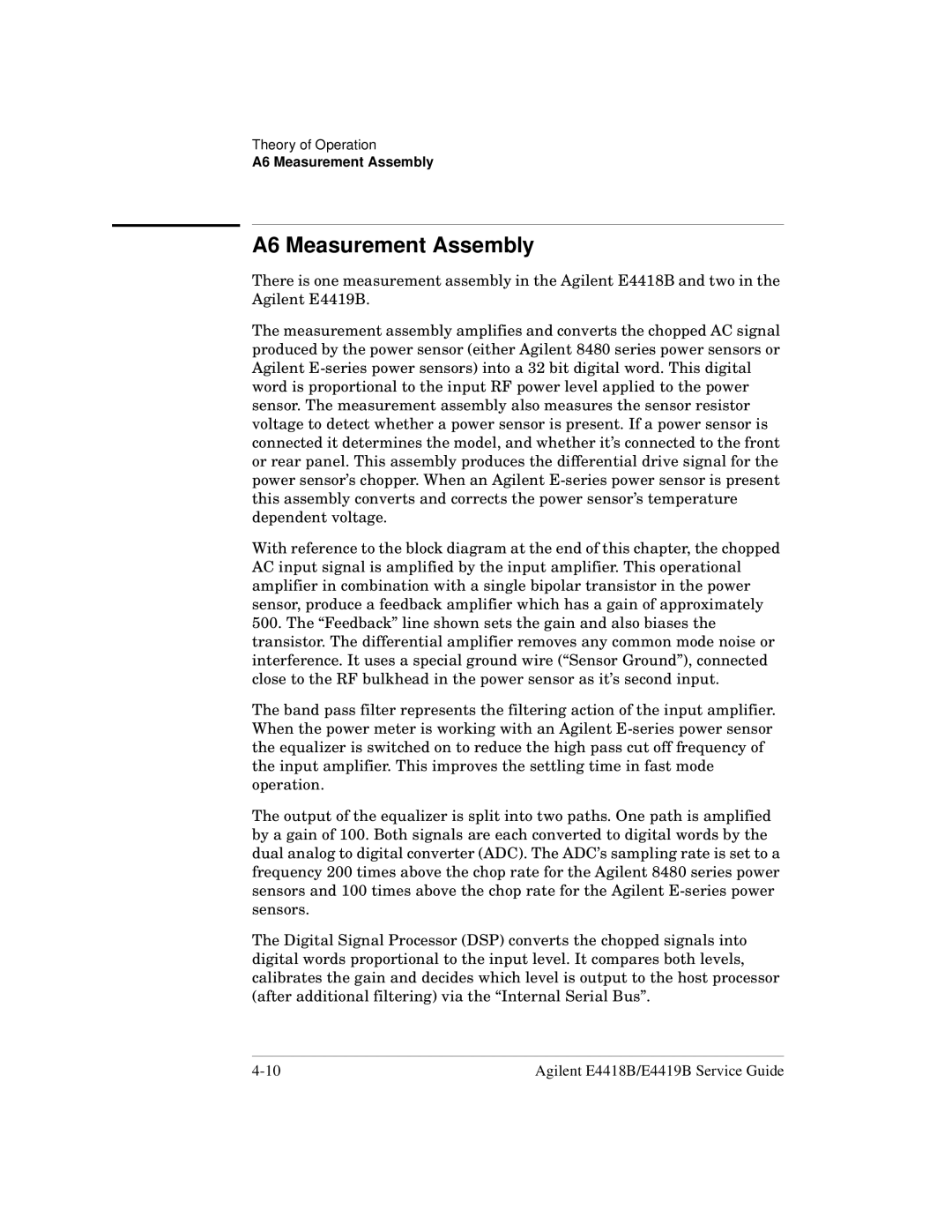
Theory of Operation
A6 Measurement Assembly
A6 Measurement Assembly
There is one measurement assembly in the Agilent E4418B and two in the Agilent E4419B.
The measurement assembly amplifies and converts the chopped AC signal produced by the power sensor (either Agilent 8480 series power sensors or Agilent
With reference to the block diagram at the end of this chapter, the chopped AC input signal is amplified by the input amplifier. This operational amplifier in combination with a single bipolar transistor in the power sensor, produce a feedback amplifier which has a gain of approximately
500.The “Feedback” line shown sets the gain and also biases the transistor. The differential amplifier removes any common mode noise or interference. It uses a special ground wire (“Sensor Ground”), connected close to the RF bulkhead in the power sensor as it’s second input.
The band pass filter represents the filtering action of the input amplifier. When the power meter is working with an Agilent
The output of the equalizer is split into two paths. One path is amplified by a gain of 100. Both signals are each converted to digital words by the dual analog to digital converter (ADC). The ADC’s sampling rate is set to a frequency 200 times above the chop rate for the Agilent 8480 series power sensors and 100 times above the chop rate for the Agilent
The Digital Signal Processor (DSP) converts the chopped signals into digital words proportional to the input level. It compares both levels, calibrates the gain and decides which level is output to the host processor (after additional filtering) via the “Internal Serial Bus”.
Agilent E4418B/E4419B Service Guide |
